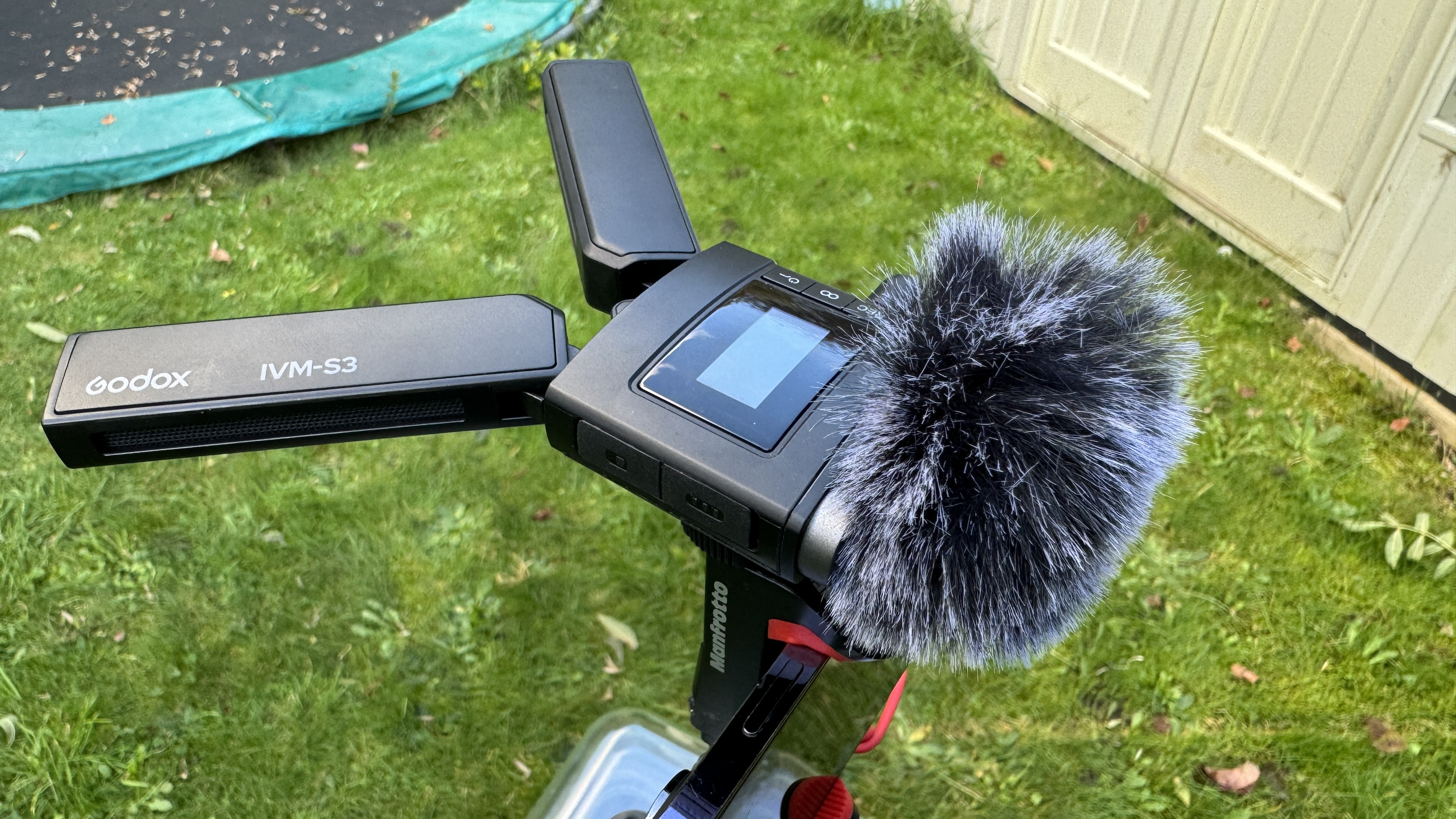
Your camera or smartphone will be able to capture great-looking high-definition footage, but without additional help, the audio quality will be inferior to the footage. If you talk to a camera at arm’s length then the sound should be adequate, but at a greater distance (such as a couple of meters) the volume of the subject’s voice will get lower and is more likely to be drowned out by other noises in the location.
Pick-up Mode: Cardioid
Frequency Range: 50Hz-20KHz
Sensitivity: -38dB±2dB
Max. SPL: >100dB
SNR: >70dB
Output lmpedance: 600Ω
Lithium Battery Parameters: 3.8V, 470mAh, 1.786Wh
Type-C Input: 5.0V/0.3A
Pickup Distance: 2m
Battery Life: Approx. 12h in recording status, 15h in normal working status
Dimensions: 139x53x45mm
Net Weight: 103g
Godox produces a range of shotgun mics that you can mount on a camera. Their older IVM-S2 is a mini shotgun mic that has a cardioid polar pattern. This means it’s more sensitive to sound coming from directly in front of the camera, whilst keeping sound from the sides and rear of the camera to a relative minimum.
Their latest release is the IVM-S3 which has two mini cardiod shotgun mics attached to the shoe-mounted body. These mics can be spread through a range of 90º to create a narrower or wider sound field. This gives you more control over the IVM-S3’s sensitivity to noise.
The most important key feature is the two shotgun mics attached to a control unit (instead of having a more conventional single gun ‘barrel’). The IVM-S3’s two gun mics have a cardioid polar pattern, so they listen to a narrow field of audio directly in front of the camera. If you’re talking to camera then you can keep the mics together - capturing a narrower sound field that reduces background noise from the sides and rear of the camera.
If you need to capture two people talking you can spread the two gun mics apart for a wider (but still directional) sensitivity to sound. I’d not encountered a double-barrelled shotgun mic before so was tempted to file this one under ‘gimmick’. Check out the performance section to see if I was mistaken.
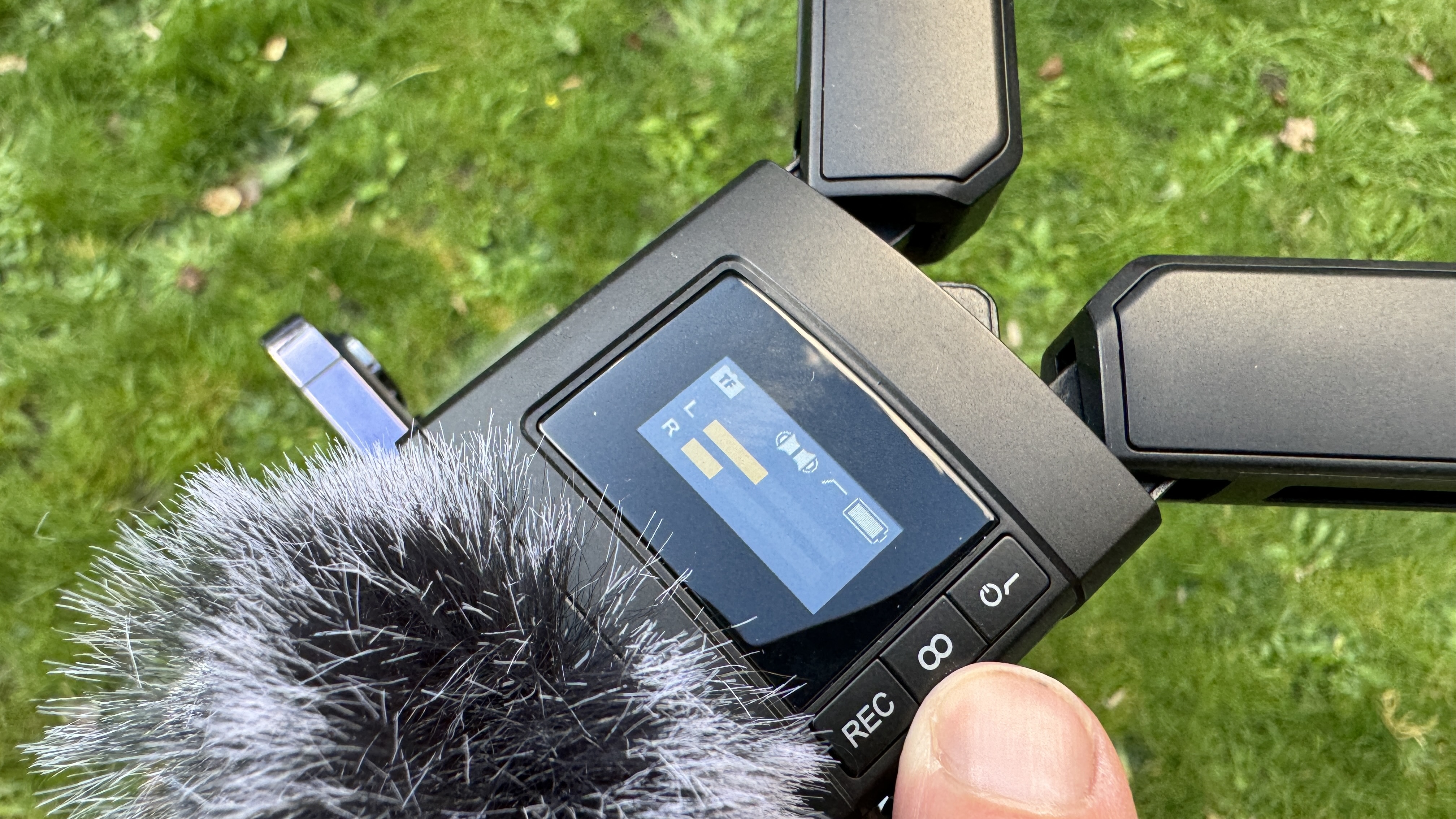
Godox IVM-S3: Design & Handling
The IVM-S3 is made of a lightweight (132g) plastic, so it will pop onto a DSLR or slide into a cold shoe mount on a smartphone’s tripod or cage rig without becoming a burden when you’re shooting handheld.
It’s quite good fun to open and close the two gun mics to spread their range of coverage from 0º-90º (as if opening and closing a pair of scissors). The hinge between the two ‘guns’ makes satisfying clicks as you spread the mics apart in increments. Both gun mics are attached to the main body that has a third mic on the rear.
You can turn this rear mic on by tapping the omnidirectional button and then the camera operator can join in the conversation that’s being picked up by the two front-facing gun mics.

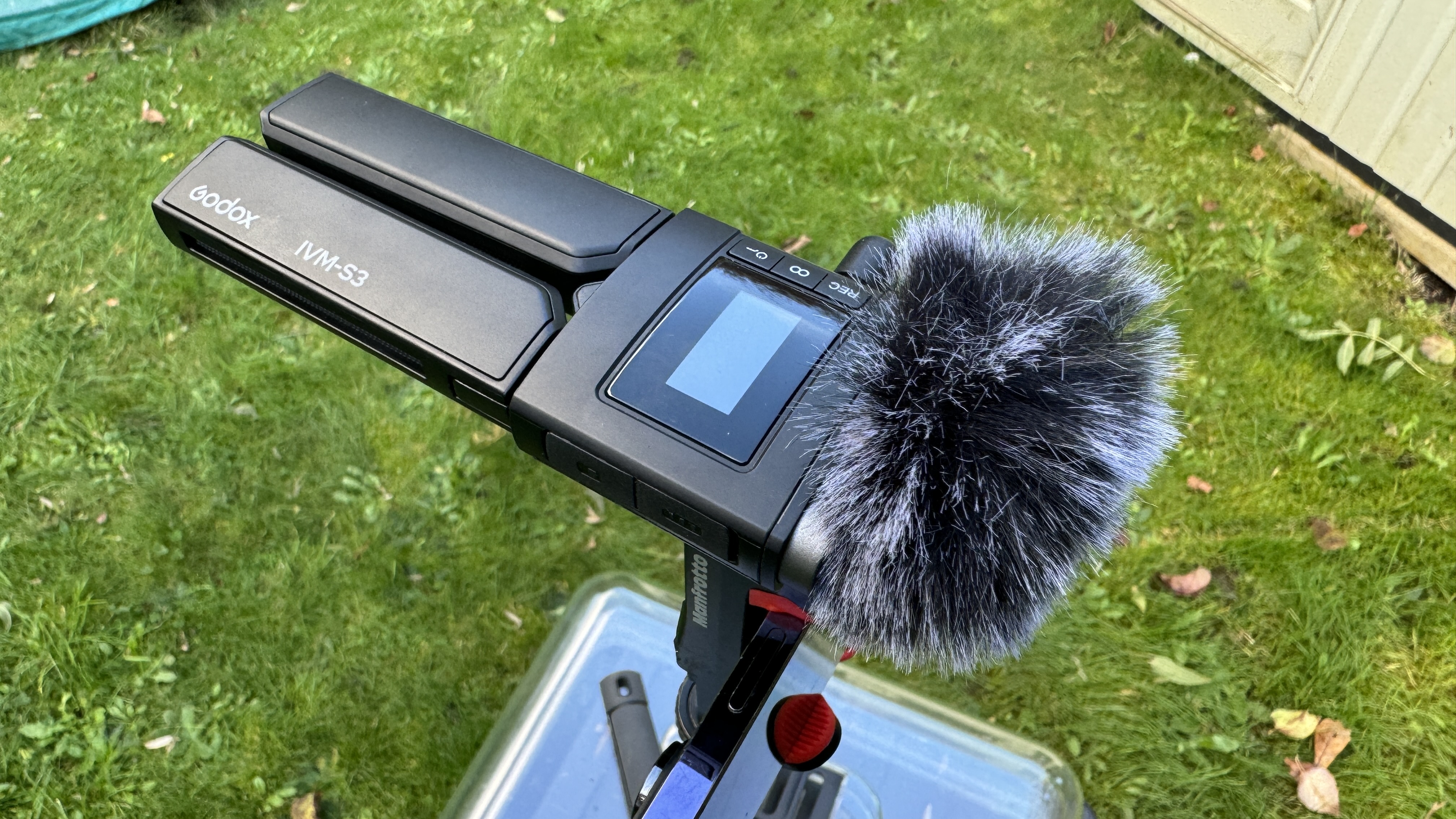
There’s also a low-cut filter button to help reduce the rumble of background noise (such as traffic) and windshields are supplied for both gun mics and a mic at the rear (more on that extra mic in the next section).
You can also twist a knob to boost the gain of the recording when the subjects are further away. A handy OLED screen on the main unit lets you see if the sound levels from both gun mics are nice and strong. You can also monitor the sound via headphones plugged into the output mini-jack socket.
In case there is a problem with the cable connecting the IVM-S3 to your camera you can back up your audio using the mic’s on-board recording feature, courtesy of a slot for a V30 MicroSD card. This can give you over 400+ hours of continuous recording.
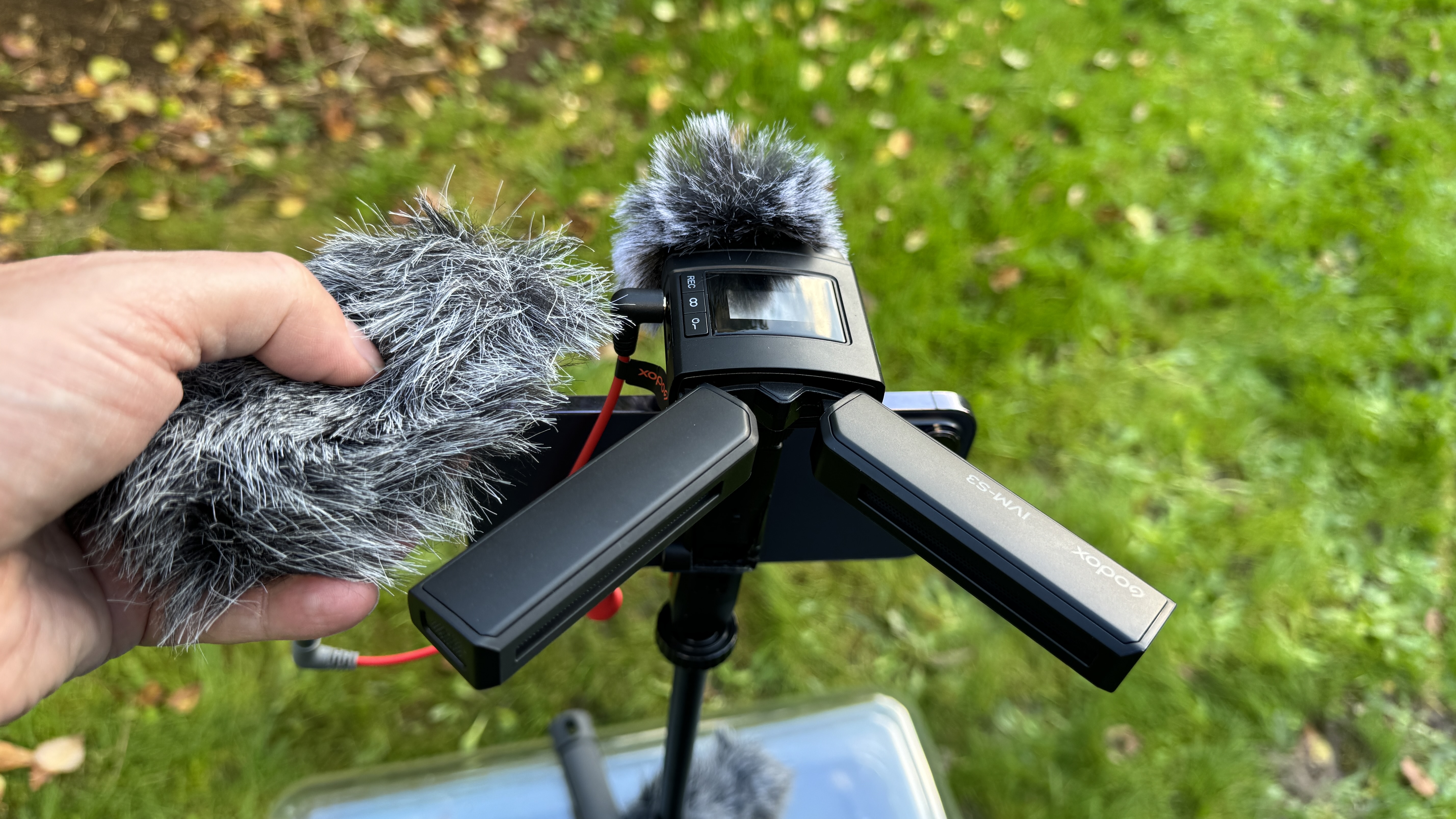
Godox IVM-S3: Performance
To test the IVM-S3 I set it up in my back garden. Five doors down a house was being constructed so there was a lot of building noise. I set the camera up with the mics facing away from the building noise.
I spread the gun mic’s scissor design until they were separated by a 90º angle. This enabled the mics to capture a wider sound field while keeping the building noise behind the camera to a minimum. I then recorded myself talking to camera via the left gun. As I wanted to see how the IVM-S3 performed as an interview mic I then repositioned myself to talk to camera via the right gun and used the classic split screen technique to place both versions of me in one shot. I then turned on the rear mic and spoke into that to record the voice of the camera operator.
Check out our supporting video to hear for yourself how the mics were able to pick me up in all three positions loud and clear while keeping the background construction sounds to a relative minimum.
I then unplugged the IVM-S3 to compare it to the sound captured from the iPhone’s built-in mic. The iPhone’s audio sounded more muffled and bassy compared to the sharper cleaner sound from the IVM-S3.
One performance failure of note is the optional low-cut filter. It does indeed reduce the presence of bassy background noise but at the cost of capturing a flat and tinny-sounding voice. We therefore recorded our test video with the low-cut filter turned off.
The IVM-S3’s three mics are supplied with windshields too, though I confess I struggled to attach the longer windshields to the two gun mics (though the rear mic’s smaller shield popped on with ease.) Fortunately, there was no wind during the test shoot.
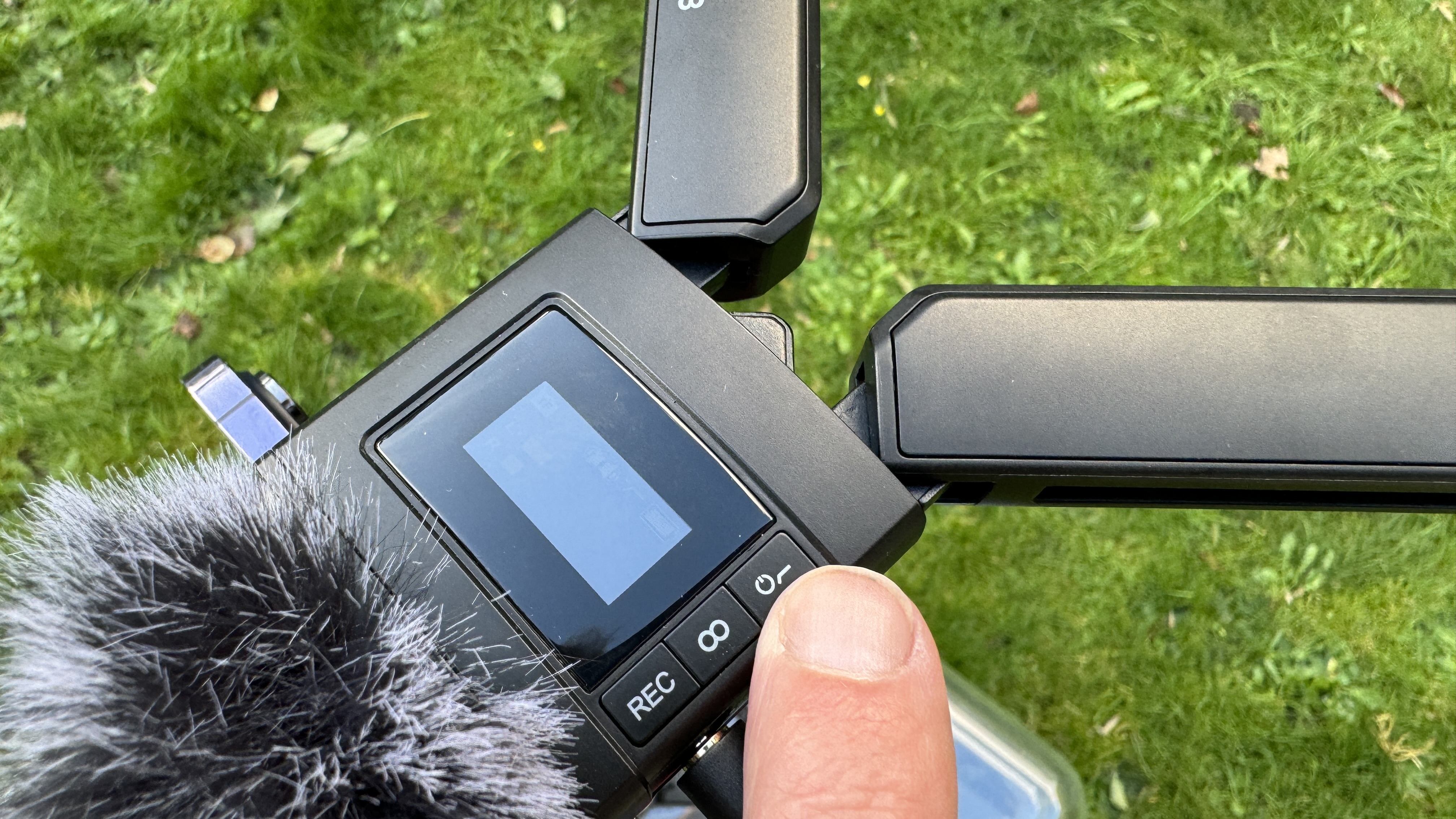
Godox IVM-S3: Final Verdict
I was impressed at the superior sound quality captured by the IVM-S3’s two front-facing gun mics, even at a distance of a meter or so from the camera. By using the scissor mechanism I could capture a wider (but still directional) sound field or close the scissors for a narrower field of sound sensitivity.
Building site noise was still audible from the rear of the camera but at an acceptable level. This makes the IVM-S3 an attractive purchase for those working in busy and noisy locations (such as wedding videographers).
The 0-90º spread enables you to focus on a single subject or widen the net when filming two or more people. It’s also nice that the camera operator can join in using the optional third mic at the rear of the camera, which sounds even better due to its closer proximity. This should make it attractive to documentary filmmakers who want to interview while filming.
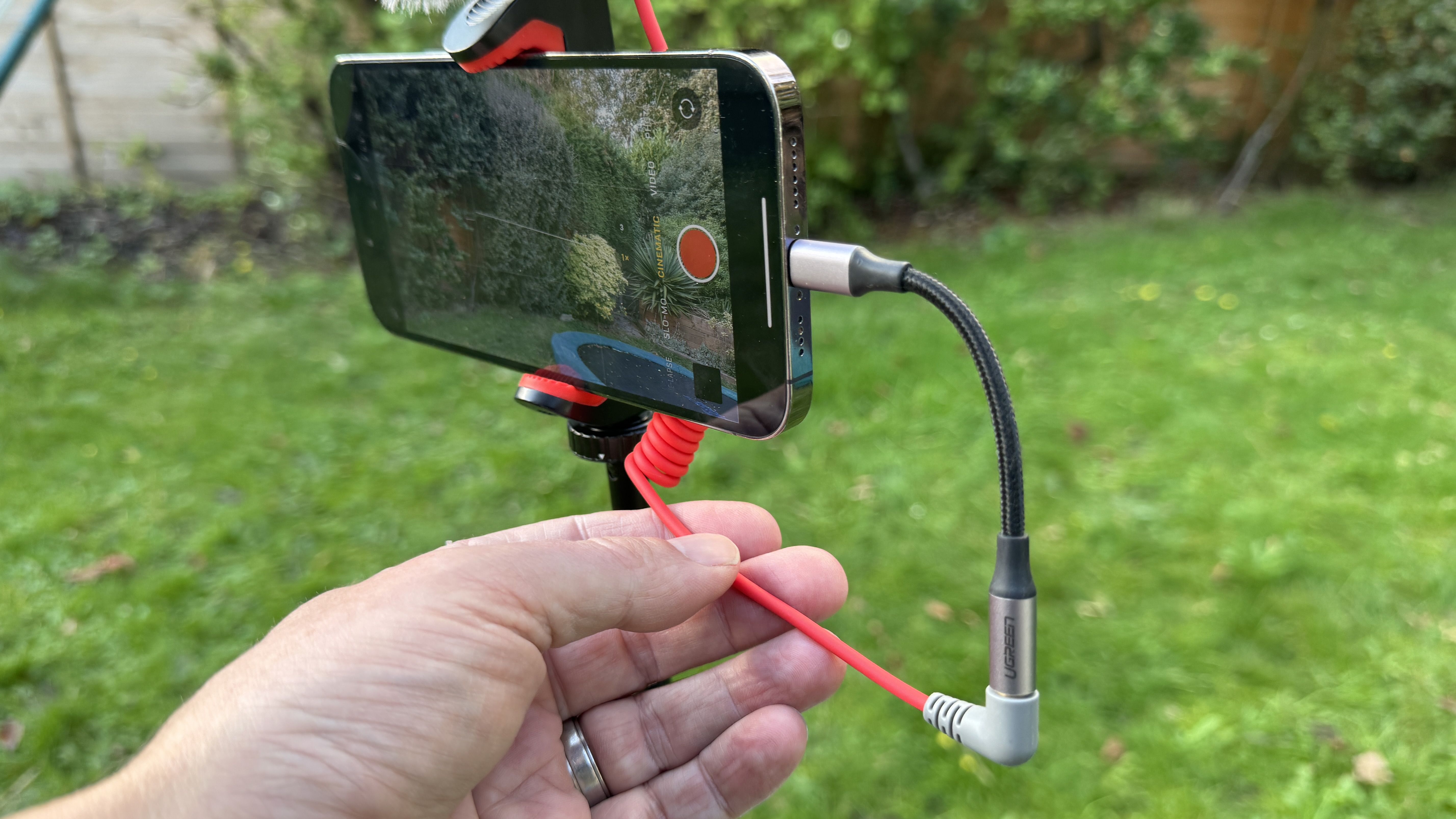
Read more: check out the latest best microphones for vlogging and filmmaking or the best iPhone microphone.







